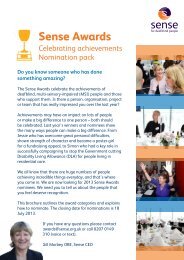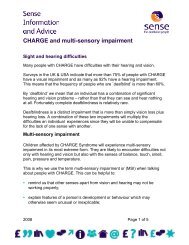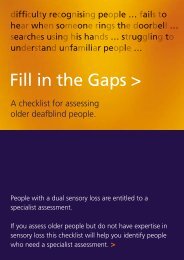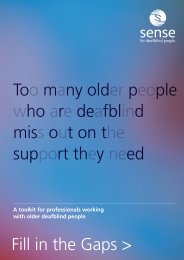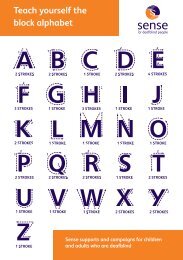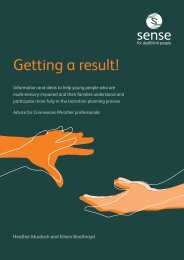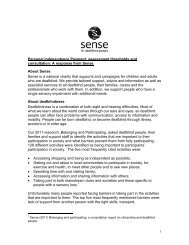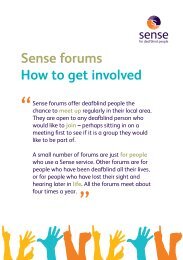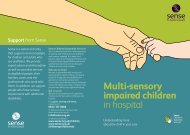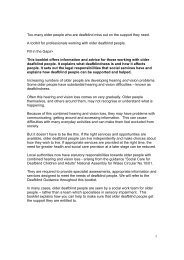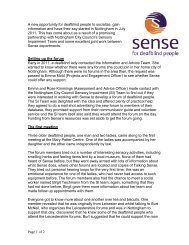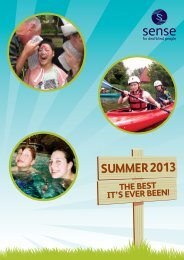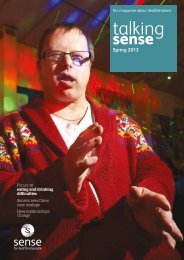MSI Unit Curriculum - Sense
MSI Unit Curriculum - Sense
MSI Unit Curriculum - Sense
Create successful ePaper yourself
Turn your PDF publications into a flip-book with our unique Google optimized e-Paper software.
<strong>MSI</strong> <strong>Unit</strong> <strong>Curriculum</strong>: Phase 3Practical, intrinsically motivating activities are used to develop concepts suchas sorting by property and understanding of quantity. Familiar people may alsobe used – for example, matching photos to people, or building up a photo of akeyworker’s face from different features.Pupils’ learning strengths are used to scaffold their conceptual development – forexample, pupils who remember songs easily may use counting songs to supportquantification. Rote learning, if this is a pupil’s strength, is always linked topractical activity.Pupils are given opportunities to explore new objects or equipment before theyare expected to use them in learning activities (for example in science, foodtechnology, circle time and drama).Pupils begin to record accounts of their experiences using drawings, photos,symbols or artefacts, with support from staff. They are supported in sharing theiraccounts with staff and peers.Pupils are helped to label work as theirs – for example, by making a mark with apen or by sticking on their photo or tactile identifier.Where possible, teaching is through activities directly useful in adulthood (forexample, laying the table, making a snack, handling money). This is particularlythe case for older pupils.Sensory responsesPupils can discriminate and recognise stimuli using residual sight, hearingand/or other senses, but will comprehend (understand the implications of)only very familiar sights and sounds.They are likely to be highly distractible by extraneous stimuli.Ongoing assessment of sensory function continues.Pupils are always given as much time as they need to receive, interpret andrespond to sensory information.Many pupils attend only to their fairly close surroundings – often within aboutone metre – even though they can access some aspects of the more distantenvironment (for example, through residual sight, hearing, smell and/or changesin air pressure on their skin). Any fleeting attention to more distant events isacclaimed and noted by staff, and the circumstances recreated as far as possibleon other occasions.67



